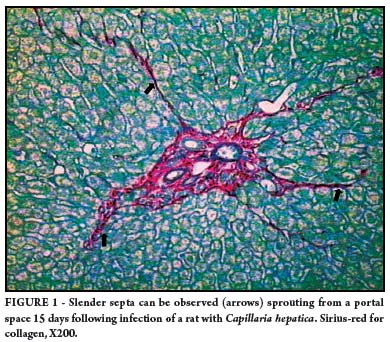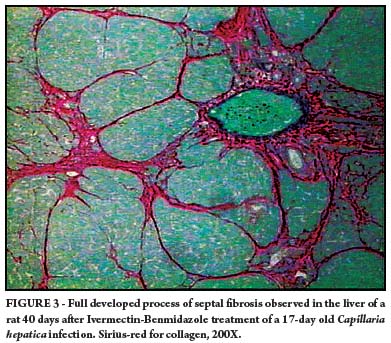INTRODUCTION: Septal fibrosis of the liver regularly develops in rats infected with the nematode Capillaria hepatica. Curative treatment of the infection prevents the development of septal fibrosis when intervention occurs up to postinfection day (PID) 15, but not later. The present investigation aimed to demonstrate which parasitic factors are present when the process of septal fibrosis can no longer be prevented by curative treatment. METHODS: Wistar rats were infected with 600 embryonated eggs of C. hepatica administered by gavage and treated with ivermectin and mebendazole in separate groups at PIDs 10, 12, 15, 17 or 20. Rats from each group and their nontreated controls, were killed and examined 40 days after the end of treatment. RESULTS: Findings by PID 15 were compatible with the stage of complete maturation of infection, when worms and eggs were fully developed and a complex host-parasite multifocal necroinflammatory reaction showed greater intensity, but with no signs of septal fibrosis, which appeared from PID 17 onward. CONCLUSIONS: Since the worms spontaneously died by PID 15, not only septal fibrosis production, but also its maintenance and further development appeared dependent on the presence of eggs, which were the only parasitic factor remaining thereafter.
Hepatic fibrosis; Pathogenesis; Capillaria hepatica



